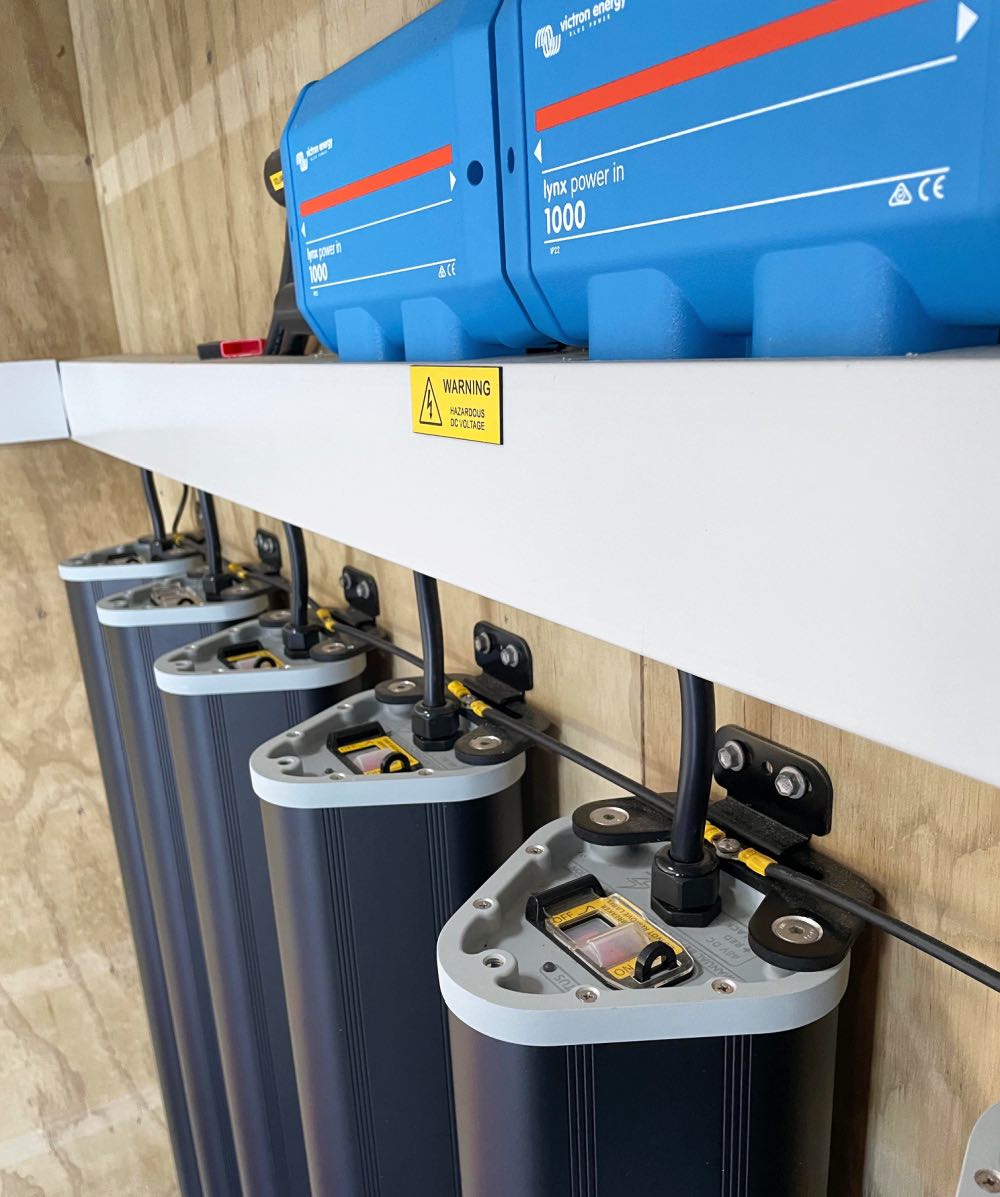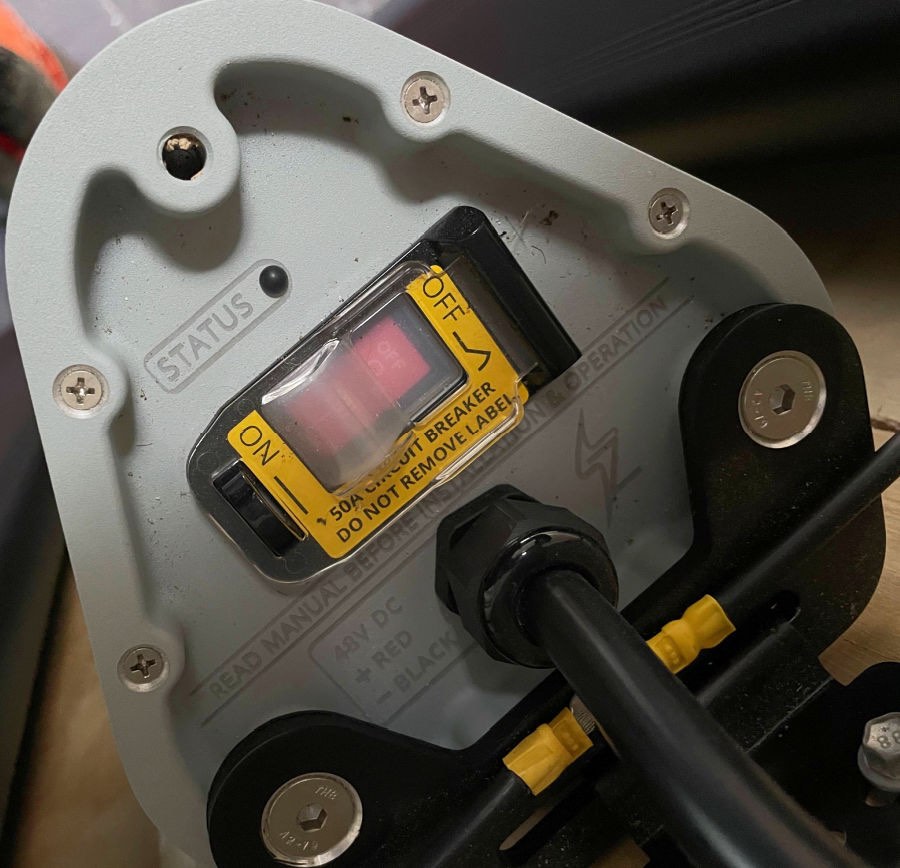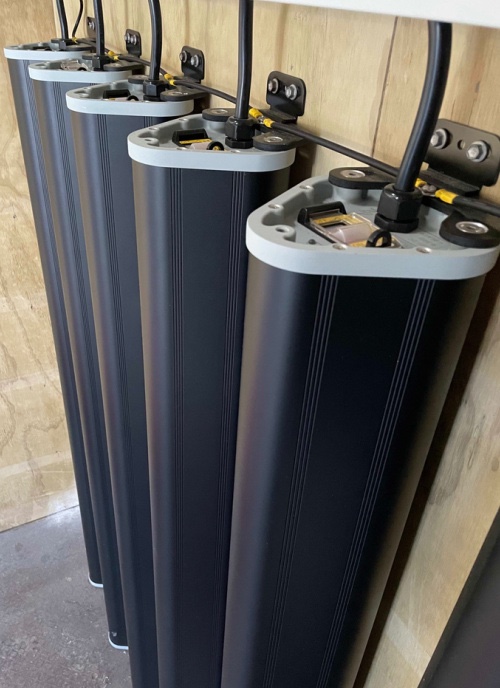- Home
- Energy Storage
- Lithium Titanate Battery
Unveiling the Power of the Lithium Titanate Battery - Your Gateway to Power Independence
What benefits does a lithium titanate battery offer that would make it a natural choice amongst the longer established and popular alternatives?
The same question came to my mind. What did this upstart have to recommend it? The following answers and considerations come from my research about using the relative newcomer.
I needed to make a choice about what I wanted to use long term for powering my own home. I wanted power independence, scaleability, safety, cost-effectiveness and reliability.
 Specially adapted lithium titanate battery assembly with Victron Lynx connection
Specially adapted lithium titanate battery assembly with Victron Lynx connectionThe Competition
When there are many companies out there vying for your hard-earned dollar multiple choices make it more difficult to shut out the noise. Yet it is interesting to see how they approach you with their offers.
So many are grid-tied. Some exclusively so. It does suggest there could be undercurrents of vested interests asserting their influences. But isn’t that just business?
There are big, well-known, household personalities tied up with a number of possible options out there creating their own disturbances.
Concerns to Consider
With all the current problems with supply issues for grids these days it feels more comfortable being able to make our own choice. Severe weather events, aging grid infrastructure and the cost of maintaining or renewing these have created serious questions for our futures.
Then there are questions about future supply of complementary energy options like reticulated gas. In the past many alternative energy suppliers have relied on these especially in domestic energy packages.
By judging purely on the energy storage options, that so many of these package alternative energy solutions offer, it would seem lithium titanate batteries aren’t even a player.
Yet careful analysis does not back up existing choices so well.
What is there in this outlier technology that makes it so appealing?
Unshakeable Stability: A Power Supply That's Here to Stay
First is the structure of the battery.
The anode, or positive terminal, is coated in lithium titanium oxide nano-crystals. These create a much larger surface area for exchange of electrons running the power to and from the battery.
This means that each one can be charged and discharged much more quickly than other lithium ion batteries with their smaller surface area carbon anodes.
More rapid discharge allows for the use of more electric powered appliances in the home, including running them at the same time. If required, a more powerful generator can be used to rapidly store extra power.
The batteries can be 100% discharged and still retain their normal power capacity.
 Top view of Lithium Titanate Battery with controls
Top view of Lithium Titanate Battery with controlsHigh Stability and Safety - Because Peace of Mind is Paramount
With a titanium oxide structure, issues with dreaded dendrites or tentacles that form between the anode and cathode in other lithium batteries causing fires are reduced or nullified.
The titanate structure is also more stable with physical damage such as direct impact or even accidental drilling into the battery structure.
They can be used in a much wider temperature range than many alternative systems. They will continue to function between -40oC to 60oC with a recommended range of 5-35oC.
Being robust they can be used indoors, under cover, or placed outdoors without a decline in performance. In outdoor situations however they should not be in direct sunlight or in continual water spray.

Long-lasting Power - For a Future Free of Worry
It is also essential to have years of life to any storage system. The unit cost of batteries is not the only reason to choose one if it has to be replaced several times over our expected lifetime of use.
Lithium titanate batteries are available with 22,000 cycles. Each battery can be charged and discharged up to three times daily. That would create 20 years of use.
Less frequent full discharge and charge would make them last even longer.
Battery charge decay is a lot lower in the lithium oxide battery. We have much more power available over a longer lifetime.
When we then look at the lifetime of use in combination with the unit cost of a battery the lithium titanate ones work out as much more economical.
Lithium Titanate Battery: Power Density vs Efficiency
Using titanium creates a heavier unit than a lot of lithium ion options. Which is why some people raise questions about their energy density.
But this more of a concern when we make a choice of where we would use the technology. When we we are looking for lightness of an object like in a phone or even a car, the lighter the storage system is the easier it is in day to day work or using its power to run the vehicle.
But if we are talking about home, or even larger supply energy storage, weight of the unit is not the over-riding concern.
In spite of the apparent disadvantage of its energy density lithium titanate batteries are already being used in some cars, buses and even larger hand held devices.
Add As You Go: Accommodating Growth and Change
Another advantage of these useful batteries is their ease in adding more storage over time. To do so the only stipulation is that the battery voltages be within 0.5V of each other at the time of new unit installation.
A number of companies are producing lithium titanate options that allow for plug and play for systems that suit domestic supply up to large commercial and even grid storage options as needed.
Having looked at the range of possibilities out there for my future energy storage use I decided that the lithium titanate option was a no brainer.
Page written with the help of AI
- Home
- Energy Storage
- Lithium Titanate Battery
New! Comments
Have your say about what you just read! Leave me a comment in the box below.